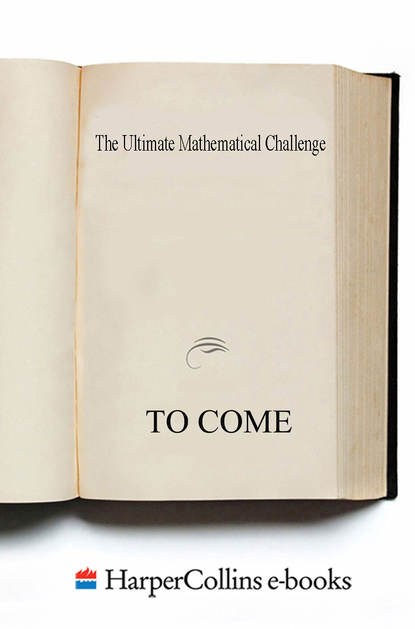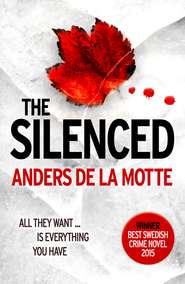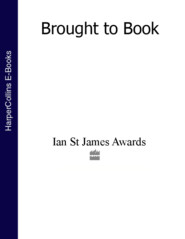По всем вопросам обращайтесь на: info@litportal.ru
(©) 2003-2024.
✖
The Ultimate Mathematical Challenge: Over 365 puzzles to test your wits and excite your mind
Настройки чтения
Размер шрифта
Высота строк
Поля
Crossnumber 13 (#litres_trial_promo)
Week 51 (#litres_trial_promo)
Week 52 (#litres_trial_promo)
The Ultimate Challenge (#litres_trial_promo)
Week 53 (#litres_trial_promo)
Solutions (#litres_trial_promo)
Problems 1 – 366 (#litres_trial_promo)
Make a Number Challenge (#litres_trial_promo)
Crossnumbers (#litres_trial_promo)
Logic Challenges (#litres_trial_promo)
Shuttle Challenges (#litres_trial_promo)
The Penultimate Challenge (#litres_trial_promo)
The Ultimate Challenge (#litres_trial_promo)
Glossary with Some Useful Facts (#litres_trial_promo)
Table of Squares, Primes etc. (#litres_trial_promo)
Acknowledgements (#litres_trial_promo)
About the Publisher (#litres_trial_promo)
Foreword (#ulink_f1462f54-c1e1-5308-9f65-60f349a55d54)
Marcus du Sautoy (#ulink_f1462f54-c1e1-5308-9f65-60f349a55d54)
There are two things that made me fall in love with mathematics. The first was my teacher at my comprehensive school revealing that there was more to mathematics than long division. Seeing the big stories of mathematics about prime numbers, four-dimensional geometry, symmetry and more made me realise the beauty and creativity that bubbles throughout the subject.
The second was when my teacher introduced me to the puzzles of Martin Gardner in Scientific American. It was then that I got hooked on the amazing buzz you get when you’ve struggled to crack a challenging puzzle and then suddenly you see a clever way to unlock the enigma. Be warned: cracking puzzles releases a very addictive drug.
In this book you can immerse yourself in the joys of the second reason I fell in love with mathematics. Jam-packed with problems that have formed part of the UKMT competitions over the years, these challenges range from those aimed at students taking their first steps onto the mathematical terrain to problems that are for those scaling some of the peaks of the subject.
Although the questions formed part of various competitions, I think it is important to remember that mathematics is not at its heart a competitive sport. As mathematicians we all work together to advance our understanding of the universe of numbers and geometry. Every theorem that we prove relies on all the theorems and proofs that previous generations have laid down right back to the Ancient Greeks. Of all the sciences, mathematics is perhaps unique in the way we truly stand on the shoulders of giants to see further and deeper into our subject.
So the only competitive aspect of the problems for you as a reader is the fun of competing against yourself. Enjoy the problems you can’t solve so easily. They are ultimately the ones that will give you the biggest buzz when you crack them. What gets me up in the morning to go to my desk to do mathematics is all the problems I can’t solve. And when you’ve mastered all the challenges of this book, just remember that mathematics has a whole host of big stories that are still waiting for someone to write the final chapter and reveal the mysteries that still obsess us as mathematicians.
Marcus du Sautoy is Professor of Mathematics and Simonyi Professor for the Public Understanding of Science at the University of Oxford.
Introduction
This book contains a selection of problems drawn from the various competitions and other activities organised by the United Kingdom Mathematics Trust (UKMT).
The UKMT was founded in 1996 by bringing together a number of mathematics competitions for school students organised by three different bodies: the British Mathematical Olympiad Committee, the National Committee for Mathematics Contests and the United Kingdom Mathematics Foundation. Today the UKMT organises a range of different competitions and other activities for students of all ages from 10 to 18, with the stated aim ‘to advance the education of children and young people in mathematics’.
This book consists of one short problem for each day of the year, with an interlude every fourteen days that consists of a longer challenge. The difficulty of the problems varies. We have listed at the end of the book the source of each problem. Together with the description of the competition from which it is drawn, this should give the reader some indication of its intended difficulty. The difficulty of a problem is hard to assess and will naturally depend on the reader. Our intention is that the problems should get gradually harder as each week progresses, and from the start of the year to the end. However, you will probably find many exceptions to this general rule.
Many of the problems were originally set as multiple-choice questions but have been rewritten to remove this feature. This may make some of the problems harder than they originally were, although it should be remembered that in all our competitions students are given only a limited amount of time. It is this time pressure, from which the reader of this book is free, that makes our competitions a tough challenge for school students.
In the Olympiad papers students are asked to write out full solutions and not just give the answer. In marking these papers most of the credit is given for coming up with a cogent and clearly expressed argument; a correct numerical answer by itself counts for little. This feature is missing in the Olympiad problems given in this book, as we are not able to mark your answers! For this reason the full flavour of these problems as presented here is missing. You will find it in the UKMT publications, listed below, which cover the Olympiad problems.
You should also note that the UKMT has a ‘no calculators’ rule for all its competitions. This is because our aim is to encourage good mathematical thinking. Calculators are helpful when numerical answers are required, but using them is often a substitute for thinking. You, dear reader, are, of course, free to use calculators and other electronic devices in tackling these problems, but we think they will only rarely be of any help.
How the problems have been chosen
UKMT problems are designed for students who are currently studying mathematics. In selecting problems for this book aimed at a general reader we have mainly avoided problems that require up-to-date knowledge of the current mathematics curricula. For example, although algebra will often be useful in tackling a problem, we have selected very few problems that are explicitly about algebra. We have included some geometry problems, because geometry is such a beautiful subject. However, most of the problems can be solved using no more than a little numerical knowledge, logical thinking and native wit.
For those whose knowledge is a little rusty we have included a Glossary containing some reminders of mathematical terminology and some basic geometrical facts about angles.
Solutions
To include full solutions, with detailed explanations, to all the problems would require a book four times as large as the current volume. We have therefore generally only given short solutions, but we hope that these will let you know whether you solved the problem correctly, and will be of help if you are ever baffled.
Detailed solutions to many of the problems may be found in the UKMT publications listed below. Solutions to many of the problems, especially those from recent years, may also be downloaded (for free!) from the UKMT website: www.ukmt.org.uk
The range of UKMT competitions
We list below the different UKMT competitions from which these problems have been drawn, giving an indication of the students they are aimed at and the amount of time they are given. Which competition a student is qualified for depends on their school year. Because school years are denominated differently in different parts of the UK, for simplicity we have translated them into the standard ages of the students in these school years.
Primary Team Maths Resources (PTMR)
These are a range of different team activities designed for 10- and 11-year-old students with the aim of facilitating secondary schools in running events for their feeder schools. The activities are mostly similar to those in the Team Maths Challenge but also include some logic problems that we have used for some of our interludes.
Junior Mathematical Challenge (JMC)
Intermediate Mathematical Challenge (IMC)
Senior Mathematical Challenge (SMC)
Each of these papers is made up of 25 multiple-choice questions. The JMC is aimed at students aged 12 or 13, the IMC at students aged 14, 15 or 16, and the SMC at students aged 17 or 18. These papers are often taken by students younger than the target range. For the JMC and IMC, students are given 60 minutes, and for the SMC they are given 90 minutes.
Kangaroo Competitions
The International Mathematical Kangaroo (Kangourou sans Frontières) is an international competition founded in France in 1991 in which over 50 countries now take part. The idea came from the Australian Mathematics Competition, and was named the Kangaroo in recognition of this. The UKMT uses Kangaroo questions for four competitions that are open to students who do sufficiently well in the Challenges, as follows:
Junior Kangaroo for students aged 12 or 13;
Grey Kangaroo for students aged 14;











